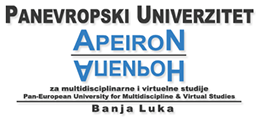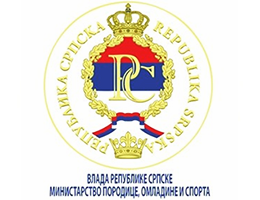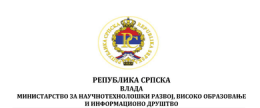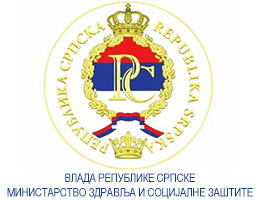Odnos između kardiorespiratorne kondicije, težine rođenja deteta i roditeljskog BMI1, na status gojaznosti u detinjstvu
Volume 12, Issue 1 (2022)
Volume 12, Issue 1 (2022)
Odnos između kardiorespiratorne kondicije, težine rođenja deteta i roditeljskog BMI1, na status gojaznosti u detinjstvu
Apstrakt:
Cilj istraživanja bio je da se utvrde razlike u kardiorespiratornoj kondiciji, indeksu telesne mase roditelja i rođenoj težini, između grupe dece sa normalnom i prekomernom telesnom težinom/gojaznošću i da se utvrdi koliko proučavane varijable utiču na rizik od prekomerne težine njihovog biološkog potomstva. Istraživanje je sprovedeno na uzorku od 1096 ispitanika, uzrasta od 6 do 11 godina, izabranih po slučajnom izboru iz nekoliko osnovnih škola u regionu Skoplja. Uzorak je podeljen u dva poduzorka prema polu, 496 ispitanika muškog pola i 600 ispitanica. Kardiorespiratorna kondicija je procenjena testom trčanja na 20 metara u skladu sa procedurama opisanim u FITNESSGRAM-u. Deca su klasifikovana u dve grupe, na osnovu procenta indeksa telesne mase, prema IOTF standardu. Rođena težina dece je procenjena iz pedijatrijske dokumentacije svakog deteta pri rođenju. Stanje težina/gojaznih roditelja definisano je prema klasifikaciji Svetske zdravstvene organizacije. Podaci o obrazovanju roditelja (posebno majke i oca) prikupljeni su anketnim upitnikom. Prevalencija prekomerne težine i gojaznosti u ovoj studiji iznosila je 22,6% i 14,9%, za ceo uzorak ispitanika bez statistički značajnih polnih razlika. Rezultati istraživanja ukazuju na vezu između gojaznosti roditelja i njihove dece. Štaviše, rezultati sugerišu da su niska kardiorespiratorna sposobnost i visoka porođajna težina prediktori OV/OB (prekomerne težine/gojaznosti) u detinjstvu.
Ključne riječi:
deca, gojaznost, kardiorespiratorni fitness, težina na rođenju, roditeljski BMI
Puni tekst:
DOI:
Reference:
Baird J, Fisher D, Lucas P, Kleijnen J, Roberts H, Law C (2005). Being big or growing fast: systematic review of size and growth in infancy and later obesity. BMJ 331, 929.
Cole T, Bellizzi M, Flegal K, Dietz W (2000). Establishing a standard definition for child overweight and obesity worldwide: interna- tional survey. BMJ 320, 1240–1243.
Curhan GC, Chertow GM, Willett WC, Spiegelman D, Colditz GA, Manson JE et al. (1996). Birth weight and adult hypertension and obesity in women. Circulation 94, 1310–1315.
Davison KK, Birch LL (2001). Child and parent characteristics as predictors of change in girls’ body mass index. Int J Obes Relat Metab Disord 25, 1834–1842.
Dubois L, Girard M (2006). Early determinants of overweight at 4.5 years in a population-based longitudinal study. Int J Obes (Lond) 30, 610–617.
Ebbeling, C. B., Pawlak, D. B. & Ludwig, D. S. Childhood obesity: public-health crisis, common sense cure. Lancet. 360, 473–482 (2002).
Gordon-Larsen P, Adair LS, Suchindran CM (2007). Maternal obesity is associated with younger age at obesity onset in U.S. adolescent offspring followed into adulthood. Obesity (Silver Spring) 15, 2790– 2796.
Gordon-Larsen P, Mcmurray RG, Popkin BM (2000). Determinants of adolescent physical activity and inactivity patterns. Pediatrics 105, E83.
Gutin, B., Yin, Z., Humphries, M. C., Hoffman, W. H., Gower, B., & Barbeau, P. (2004). Relations of fatness and fitness to fasting insulin in black and white adolescents. The Journal of pediatrics, 145(6), 737-743.
Herbert A, Gerry NP, Mcqueen MB, Heid IM, Pfeufer A, Illig T et al. (2006). A common genetic variant is associated with adult and childhood obesity. Science 312, 279–283.
Janssen I, Katzmarzyk PT, Boyce WF, Vereecken C, Mulvihill C, Roberts C et al. (2005). Comparison of overweight and obesity prevalence in school-aged youth from 34 countries and their relationships with physical activity and dietary patterns. Obes Rev 6, 123–132.
Karter AJ, Rowell SE, Ackerson LM, Mitchell BD, Ferrara A, Selby JV et al. (1999). Excess maternal transmission of type 2 diabetes. The Northern California Kaiser Permanente Diabetes Registry. Diabetes Care 22, 938–943.
Leger LA, Mercier D, Gadoury C, Lambert J (1988). The multistage 20 meter shuttle run test for aerobic fitness. J Sports Sci 6, 93–101.
Lee,S.J., Arslanian.S.A. (2007) Cardiorespiratory fitness and abdominal adiposity in youth. Eur J Clin Nutr, doi: 10.1038/sj.ejcn.1602541.
Maffeis C, Micciolo R, Must A, Zaffanello M, Pinelli L (1994). Parental and perinatal factors associated with childhood obesity in north- east Italy. Int J Obes Relat Metab Disord 18, 301–305.
Maffeis C, Talamini G, Tato L (1998). Influence of diet, physical activity and parents’ obesity on children’s adiposity: a four-year longitudinal study. Int J Obes Relat Metab Disord 22, 758–764.
Magarey AM, Daniels LA, Boulton TJ, Cockington RA (2003). Predicting obesity in early adulthood from childhood and parental obesity. Int J Obes Relat Metab Disord 27, 505–513.
Ortega, F. B., Tresaco, B., Ruiz, J. R., Moreno, L. A., Martin‐Matillas, M., Mesa, J. L., ... & Castillo, M. J. (2007). Cardiorespiratory fitness and sedentary activities are associated with adiposity in adolescents. Obesity, 15(6), 1589-1599.
Ortega, F. B., Artero, E. G., Ruiz, J. R., Jiménez-Pavón D. (2011) Physical fi tness levels among European adolescents: the HELENA study. Br J Sports Med 2011;45:20–29. doi:10.1136/bjsm.2009.062679
Ruiz, J. R., Rizzo, N. S., Hurtig-Wennlöf, A., Ortega, F. B., W àrnberg, J., & Sjöström, M. (2006). Relations of total physical activity and intensity to fitness and fatness in children: the European Youth Heart Study–. The American journal of clinical nutrition, 84(2), 299-303.
Gontarev,S., Kalac, R.(2014) The relationship between overweight, obesity and physical fitness among eleven and twelve-year-old Macedonian adolescents. Journal of Physical Education and Sport 14(2):178-185
Gontarev S, Kalack R, Velickovska LA, Stojmanovska DS, Misovski A, Milenkovski J. (2018) Health-related physical fitness of normal, stunted and overweight children aged 6-14 years in Macedonia. Nutr Hosp 2018;35(5):1208-1214
Stettler N, Zemel BS, Kumanyika S, Stallings VA (2002). Infant weight gain and childhood overweight status in a multicenter, cohort study. Pediatrics 109, 194–199.
Simmonds, M., Llewellyn, A., Owen, C. G. & Woolacott, N. Predicting adult obesity from childhood obesity: a systematic review and meta- analysis. Obes Rev. 17, 95–107 (2016).
Sommer, A. & Twig, G. The Impact of Childhood and Adolescent Obesity on Cardiovascular Risk in Adulthood: a Systematic Review. Curr Diab Rep. 18, 91, https://doi.org/10.1007/s11892-018-1062-9 (2018).
Toschke AM, Grote V, Koletzko B, Von Kries R (2004). Identifying children at high risk for overweight at school entry by weight gain during the first 2 years. Arch Pediatr Adolesc Med 158, 449–452.
Treuth MS, Butte NF, Sorkin JD (2003). Predictors of body fat gain in nonobese girls with a familial predisposition to obesity. Am J Clin Nutr 78, 1212–1218.
Wei JN, Li HY, Sung FC, Lin CC, Chiang CC, Li CY et al. (2007). Birth weight correlates differently with cardiovascular risk factors in youth. Obesity (Silver Spring) 15, 1609–1616.
Whitaker RC, Wright JA, Pepe MS, Seidel KD, Dietz WH (1997). Predicting obesity in young adulthood from childhood and parental obesity. N Engl J Med 337, 869–873.






